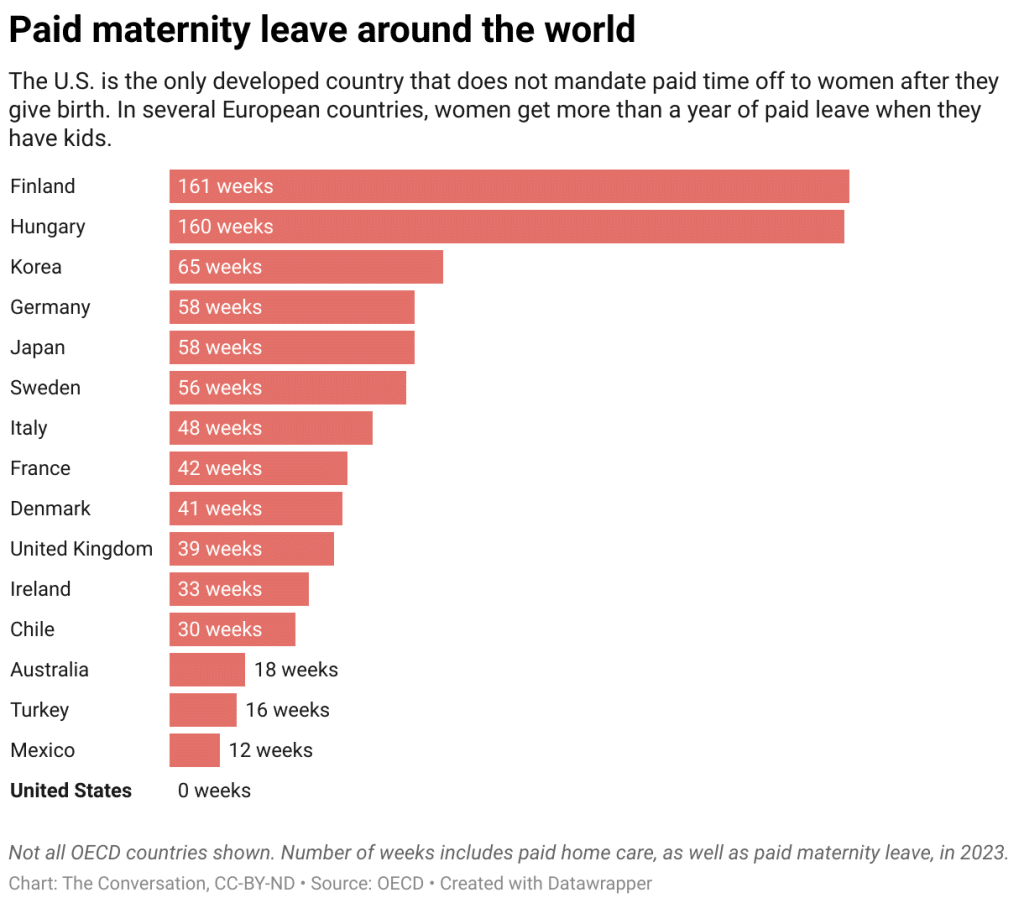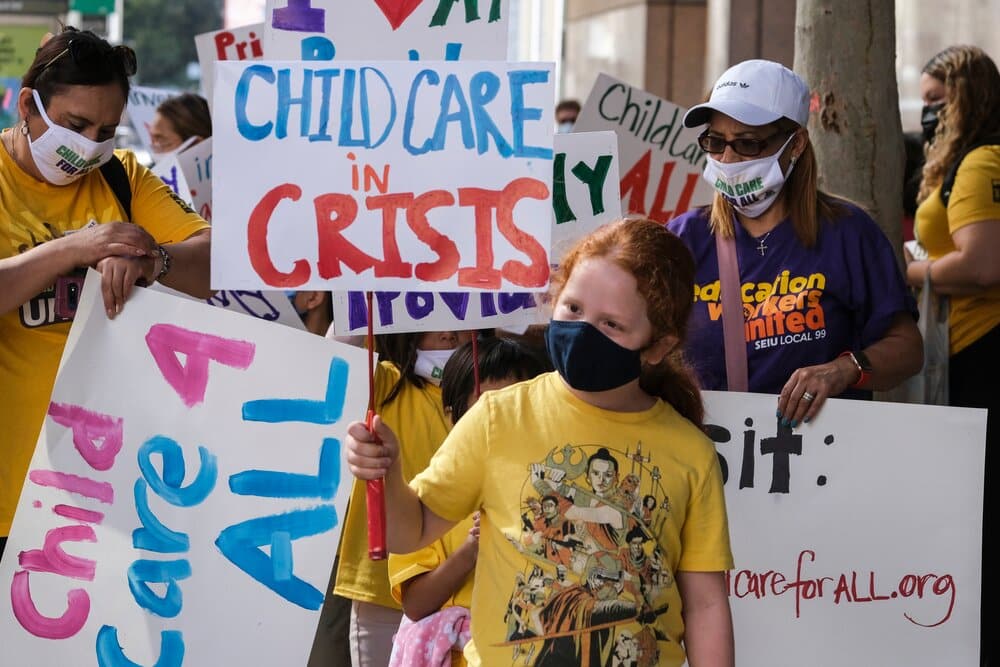Written by Joya Misra, UMass Amherst
In most American families led by couples, both parents are in the workforce. Almost three-quarters of American mothers with children under 18 work. At the same time, nearly 1 in 4 U.S. children are being raised by single moms.
Yet child care is generally unaffordable, and paid leave is not available to most U.S. parents.
Around the world, however, most employed women automatically get paid maternity leave. And in most wealthy countries, they also have access to affordable child care.
These holes in the U.S. safety net are a problem for many reasons, including one I’ve been researching with my colleagues for years: Paid parental leave and child care help women stay in the workforce and earn higher wages over time. This lack of parental leave and child care may explain why the U.S. is no longer a leader in women’s workforce participation.
Maternity leave
The U.S. is one of a handful of countries worldwide that doesn’t mandate paid maternity leave. The others are Papua New Guinea and some small Pacific island nations.
Paid maternity leave, which typically lasts at least three months, needs to be designed thoughtfully. When women can and do take 15 months or more off after having a baby, as they may in a few countries, long leaves can limit mothers’ work experience and lead to discrimination.
The 1993 Family and Medical Leave Act did mandate 12 weeks of unpaid leave with the ability to return to their job afterward for some American workers. Yet most families can’t forgo the income that moms bring home.
Denmark offers what I think is a strong example of a national policy.
There, moms get almost 22 weeks of paid maternity leave and dads get two weeks of paid paternity leave. On top of that, mothers can take another 19 weeks and fathers can take another 11 weeks of paid parental leave. This policy, which includes additional flexibility, grants parents both the time and resources necessary to care for children, without “mommy tracking” mothers.

Child Care
In many wealthy countries, child care and preschool are considered a mainstay of the educational system. But in the U.S., only about two-thirds of all children between the ages of 3 and 6 are getting publicly supported child care of any kind, including kindergarten, versus nearly all of the kids that age in France.
High-quality early childhood education programs are associated with many excellent outcomes for children from lower-income families, including higher rates of educational attainment, employment and wages.
In other words, when governments invest in child care and maternity leave, it fosters a more productive, healthy and creative workforce.
This article, originally published April 19, 2018, was updated on May 10, 2024, with more recent data.
Joya Misra is Provost Professor of Sociology and Public Policy at UMass Amherst.
This article is republished from The Conversation under a Creative Commons license. Read the original article.






